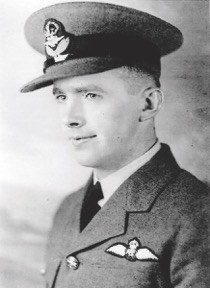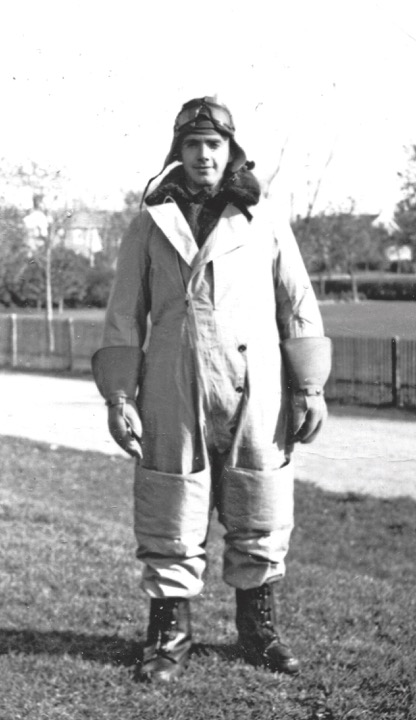Tom St. Amand and Tom Slater special to the Sarnia Jornal
(2016) The librarian at St. Patrick’s High School, Chrisee McArdle, will never forget the moment.
While viewing a new plaque dedicated to the fallen soldiers of Sarnia’s Catholic community in the lobby of her school, she was shocked to see the name “Hugh Francis Hegarty.”
Here was her great-uncle an d, coincidentally, the relative of another staff member, Judy Hubbard.
The Hegarty family emigrated from Ireland in 1924 and settled in Sarnia, where Francis attended St. Joseph’s School and later SCITS. He was the only one in the family to attend high school and when asked about his exams, he always answered, “I’ll likely flunk’er.” From thereon, family members nicknamed him “Flunker.” A wartime letter he penned to his sister, Celia, closes with “Good Bye with Love, Flunker.”
After high school, Hegarty worked a series of jobs, mostly as a mechanic, and in July of 1940, at the age of 23, he enlisted in the RCAF.
Hegarty defied his nickname. During training an officer wrote he had “above average ability” as a pilot and “Flunker” graduated from General Reconnaissance School at the top of his class. His superiors rated him a “reliable Officer [with] the makings of a good G.R. Pilot.”
On July 2, 1941, Pilot Officer Hegarty left for overseas. Sarnia’s Bill Bullock, who was seven years old at the time, re members saying goodbye to his uncle on the crowded train platform.
members saying goodbye to his uncle on the crowded train platform.
“Uncle Francie was a great guy, a terrific uncle,” he said “He always made a fuss over the kids.”
Two weeks later Hegarty was assigned to the #407 RCAF Squadron, nicknamed “The Demons” for its tenacity in conducting attacks on enemy shipping. Based at Thorney Island, a North Sea Coast bombing post, the Demons carried out 104 operational raids on German positions in the Netherlands between July and October.
Through all of their bombing raids the squadron had never lost a plane.
Until Oct. 10, 1941.
The statistics for Sarnia’s fallen reveal the dangers of Hegarty’s position. Of the 183 Sarnians who perished in the Second World War nearly half were in the Canadian air force. And of those 90 men, 70 were in bomber command. As one pilot who survived the war put it, “It was in my airplane that I first learned how to pray.”
The night of Oct. 10th was cold and blustery, punctuated with intermittent rain squalls. Pilot Officer Hegarty and his three crew members lifted off in their Hudson Bomber AN586 laden with four 250 lb. bombs in search of enemy shipping.
Their plane was nicknamed “T for Tommy” and it was late in arriving back to base.
Other pilots complained of the miserable conditions and of malfunctioning equipment that put them miles off course. As each returned, no one reported seeing PO Hegarty and his T for Tommy.
They waited and hoped.
As the hours passed and the returning pilots and crews huddled around a stove, quietly sipping tea and eating meat pies, the grim truth emerged.
Eventually, pilots headed to the operations room to make their reports. For the first time ever, the Demon Squadron was missing one of its own.
Seventy-five years have passed and no trace of Francis Hegarty, his crew or the “T for Tommy” has ever been found. In 1942, he was listed as “missing, presumed dead” and a requiem high mass was held at St. Joseph’s Church in Sarnia.
Twenty-four year old Hugh Francis Hegarty has his name inscribed on the Runnymede War Memorial in England.
And at St. Pat’s, Chrisee McArdle and Judy Hubbard know where to find the name of a hero in their family.


